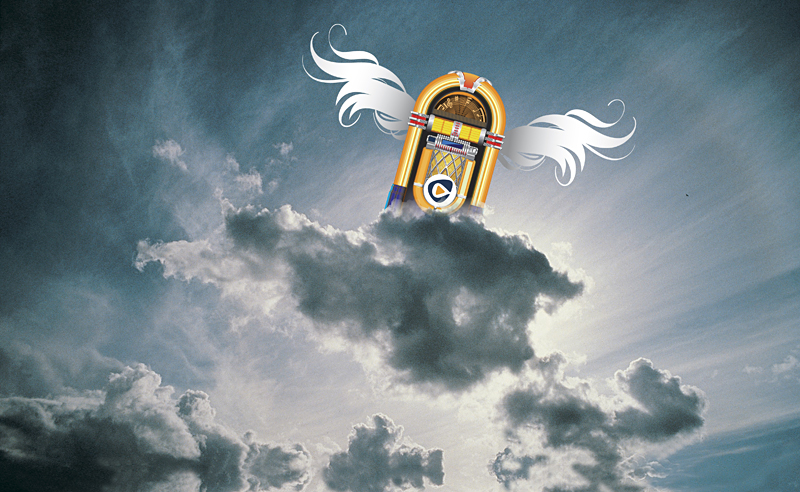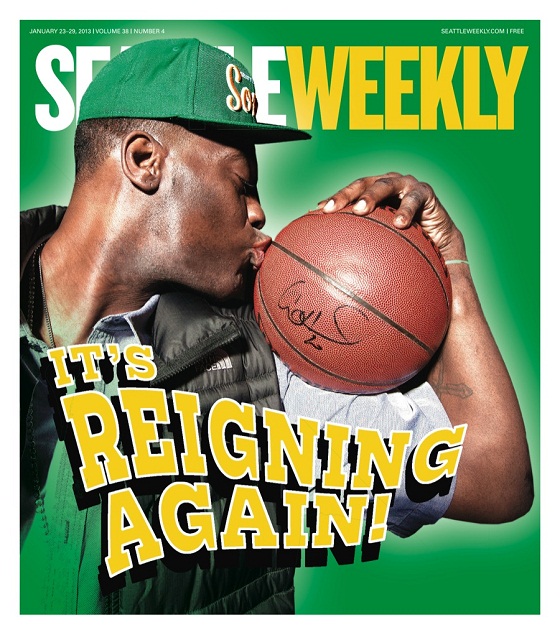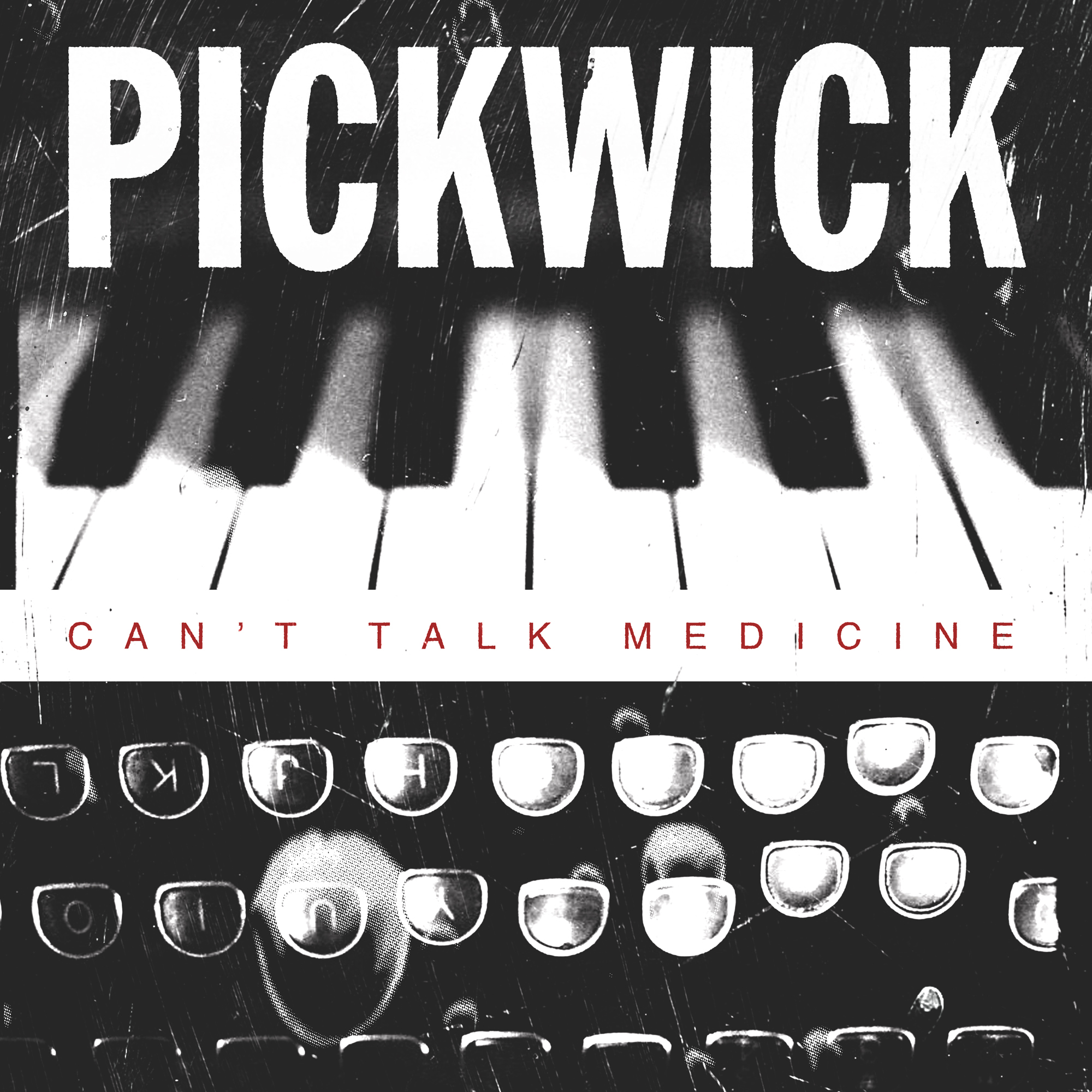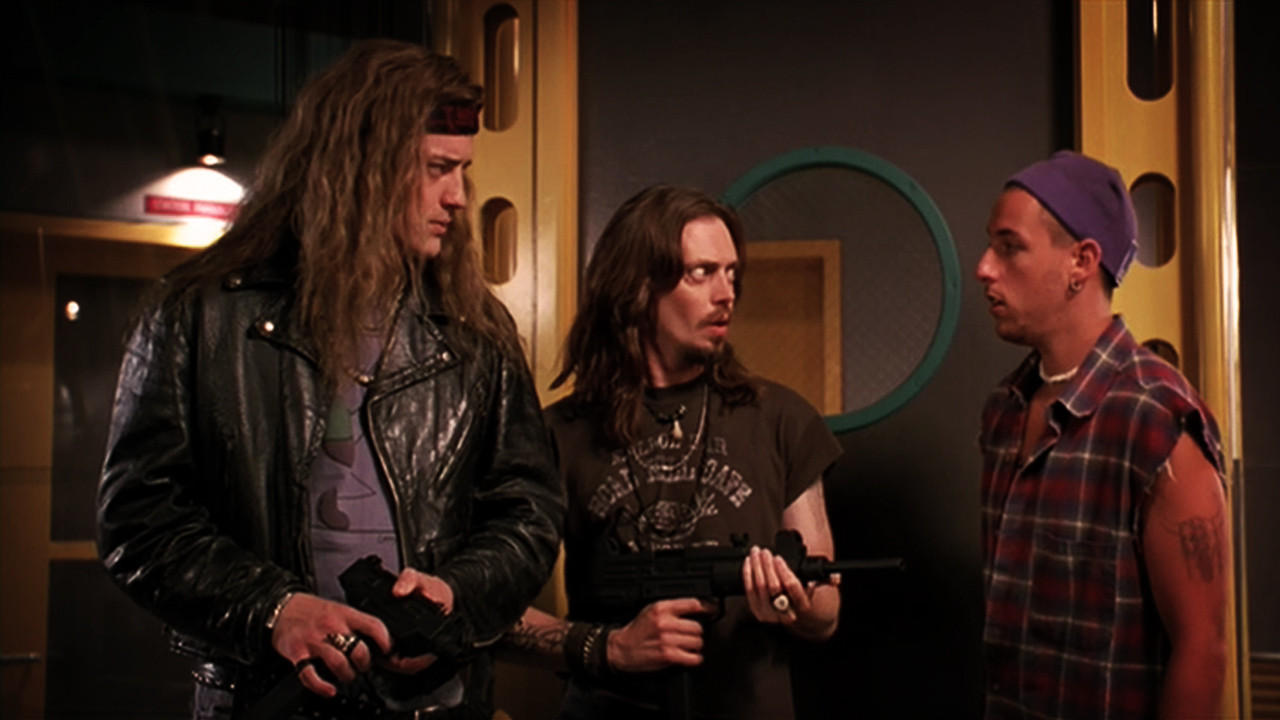It had been several years since Tim Bratton had founded and sold TuneTo.com in the Bay Area during the dot-com boom, but his father still had no clue what his son did for a living. So when his dad came up for the holidays, Bratton asked him a simple question: Who’s your favorite artist?
This was how Bratton started every pitch for his company’s music-subscription service, now known as Rhapsody. Demoing the service for a record-label executive or a music fan off the street, the sell was always the same. They’d step right up and punch in their favorite artist, and if it popped up, Bratton made a sale. If not, Bratton remembers, “They’ll go ‘Oh, this thing sucks. That thing’s a piece of shit, because it doesn’t have the music I like!’ “
This was a dance Bratton knew well. In 1998, he and four colleagues had dreamed up the idea of a jukebox in the sky, a treasure trove of every single song ever recorded that could be recalled by listeners anytime, anywhere, on any device, with unlimited usage, for a modest monthly fee. At first, they called the service Aladdin, because it seemed everyone in the post-Napster music industry was obsessed with the idea that the genie was out of the bottle—making money off recorded music was a lost cause, and touring and T-shirt revenue was all that was left of a once-bloated business.
“I remember thinking: ‘Huh, well, the real story of Aladdin is, you know, Aladdin actually got the genie back in the bottle,’ ” says Bratton, a serial entrepreneur who now runs an online publishing house called Personal Life Media. “And that’s what we’re going to help the record labels do: We’re going to do something that’s so compelling, so easy to use, that even if this free stuff never goes away, that customers will be happy to pay for it because it adds so much value. It organizes their library. It makes it easy.”
Bratton’s dad’s favorite artist was Tommy Dorsey. No problem: Rhapsody had plenty of the big-band titan’s catalogue. They went through a few more artists, such as Glenn Miller, and Rhapsody was batting a thousand.
“Then he said, ‘All right, I got one for ya. In 1955, I was in Las Vegas and I heard this woman sing, and I’d never heard her before, and I’ve never heard her since, and her name was Nellie Lutcher,’ ” Bratton remembers. “And I type it in and it popped right up. And he goes, ‘Oh, I get it. I understand what you’re doing now.’ “
Ten years after its debut, the idea and technology now known as Rhapsody passed from TuneTo.com to Listen.com in 2001, and then to Seattle’s RealNetworks when it acquired Listen.com in 2003. Last April, Real spun off Rhapsody into an independent company. Rhapsody remains the undisputed pioneer of the music-subscription business, and Bratton’s vision of a jukebox in the sky has largely become a reality. For $10 a month, subscribers get what amounts to a 13-million-song record collection on their smart phones, PCs, Internet-connected televisions, car stereos, and tablets. Unlike buying mp3s, the consumer doesn’t have to drag the songs to her iPhone or burn a CD to play the tracks at home. The entire catalog, along with users’ own playlists and favorites, follows them to every one of their devices. It’s an experience that vastly outweighs that of Napster, which lethally crippled the music industry, dorm room by dorm room, at the turn of the century. And it’s seriously called into question the logic behind buying mp3s: one album for $10 on iTunes or access to 13 million songs for the same price?
Yet for all its virtues, Rhapsody remains a niche player in the digital-music business. The masses have not been sold, and Rhapsody’s always been better at making their product hum than making the sale on a grand scale.
“With Apple, there were many years of almost-saturation-bombing advertising about the iPod, which created that halo effect,” says Mike McGuire, an analyst with Gartner, a technology research firm. “Apple spent a lot of money advertising the iPod, then beyond on the iPhone and the iPad. The subscription guys have advertised, [but] not at that level.”
By its 10th birthday in December, Bratton imagined ownership of digital music would have long since given way to leasing music on subscription services like Rhapsody. And he wasn’t alone. Subscription services have been seen as music-industry life rafts almost since their inception. Even Rick Rubin, the current co-president of Columbia Records and one of history’s most famous record producers (Beastie Boys, Johnny Cash . . . Josh Groban), prophesied a time when subscription services would save the record industry.
“In this new world, there will be a virtual library that will be accessible from your car, from your cellphone, from your computer, from your television. Anywhere,” Rubin told The New York Times in 2007 while discussing why he believed music-subscription services were the future of the recording industry. “The iPod will be obsolete, but there would be a Walkman-like device you could plug into speakers at home. You’ll say, ‘Today I want to listen to . . . Simon and Garfunkel,’ and there they are. The service can have demos, bootlegs, concerts, whatever context the artist wants to put out. And once that model is put into place, the industry will grow 10 times the size it is now.”
Yet selling people on the idea of leasing music online has turned out to be monumentally more challenging than altering consumer behavior in other media. Renting movies has been part of our culture for decades, which is why Netflix, which streams leased movies the way Rhapsody streams leased music, has more than 20 million customers. Pandora, which went public with 80 million users in February, is at its core Internet-based radio, a concept most everyone is familiar with. But Rhapsody, unlike Netflix and Pandora, is asking consumers to fundamentally change their behavior from a lifetime of purchasing music to leasing it.
Even the current CEO’s in-laws need convincing.
At home in Los Angeles on weekends, Jon Irwin listens to Rhapsody’s live blues channel in his hot tub. During the week, the California blond commutes to Seattle for his gig as Rhapsody’s CEO.
When Irwin’s father-in-law heard what he was doing for a living, he wanted to know why he should cash in his record collection and alphabetized index cards. Irwin gave him the pitch: “I said, it’s like this: You like jazz . . . ” Charlie Parker? Check. Lester Young? Check. Irwin’s father-in-law, like Bratton’s dad many years before, was sold.
The subscription sector may still be a niche, its history littered with stories proclaiming “This could be the year of the subscription business!” That potential has yet to be fully realized, but recent events have breathed new optimism into the idea that leased music could finally go mainstream. Rhapsody’s flirting with a million subscribers, thanks to their recent takeover of Napster, which became a legit subscription service in 2001. Meanwhile, Rhapsody’s European competitor, Spotify, just made the leap across the Atlantic to much fanfare. And Facebook recently launched a feature that’s going to expose its audience of 800 million to the virtues of music-subscription services.
The new ecosystem looks something like this: Subscribers to Spotify, Rhapsody, MOG, or a handful of competitors can tether their accounts to Facebook. Friends can see what they’re listening to, and if there’s a song you see in a friend’s feed that you want to hear and you’re a subscriber to the same service, you can instantly click it and hear it. If you’re not a subscriber, you can seamlessly launch a free trial without having to whip out a credit card. Or if your friend subscribes to Spotify and you subscribe to Rhapsody, you can still click to listen, hearing it through the service to which you subscribe.
“The really big win is the interactive [experience]. If you look at text-messaging, it used to be carrier-specific,” meaning Verizon customers could only message Verizon customers, says consultant Ted Cohen, a 40-year industry vet and former senior vice president of digital development and distribution for EMI who wrote some of the earliest licensing agreements for Rhapsody and iTunes. “It was only when it became interoperable that text-messaging exploded.”
In many ways, Rhapsody’s been an also-ran in the new environment for music-subscription services. Spotify has been sucking up almost all the oxygen, in part because it offers a a free, ad-based version which includes six months of unlimited usage that tapers to 10 hours a month, compared to Rhapsody’s more modest 30-day free trial. And Irwin says the U.S. press has been “acting as their [Spotify’s] marketing and PR department.” Wired, for example, proclaimed “Facebook + Spotify = The Second Coming” on the cover of its November issue.
“If you’re a music fan, there’s never been a better time, and there’s never been a better value,” says Cohen. “iTunes mainstreamed the concept of the 99-cent download . . . Steve Jobs and iTunes did an amazing job making it a simple-value proposition. Spotify has done that same kind of a job now for subscription.”
Meanwhile, Rhapsody has to overcome its rather stodgy past as a service that came preloaded into PCs in the ’00s; that used to charge $10 a month for access to just 200,000 songs because that’s all they had been able to license from record labels; and that could only be played on your computer or an awkward mp3 player that you had to buy separately.
“[The subscription model, including Rhapsody] was directionally right, and chronologically wrong,” says Matt Graves, a public-relations rep at Twitter who started working at Listen.com in 2001 and left Rhapsody in 2007. “They were too early.”
Rhapsody launched on December 3, 2001, just a few days after the late Steve Jobs announced an mp3 player called the iPod. Consequently, Graves says, the first question he and his Listen.com (now Rhapsody) colleagues received when they explained what they did for a living was: Does it work on my iPod?
The answers for many years was no. Subscribers could stream the catalog from their PCs and via Rhapsody-specific mp3 players, but they couldn’t interact with the most popular music player in the world. That changed in 2008 when Michael Glover, a software developer at Rhapsody, was finishing his bachelor’s in computing and software systems at the University of Washington-Bothell. He needed a senior project, and Rhapsody needed to integrate with what was becoming the dominant mobile music player in the world: the iPhone. So for his project, Glover decided to build an app.
Glover was working on Rhapsody’s server team, a division to which such an assignment would not naturally fall. But he approached his bosses, got approval anyway, and went to work nights and weekends developing an app that would fundamentally change the direction of the company.
“Sometimes things come into your head [with] a laser-like focus,” says Glover, now a developer at Big Fish Games. “And I felt very strongly that it was not just good for myself, but for the company. We needed to be, at the very least, on board with the biggest platform at the time, which was Apple.”
The Rhapsody app launched in September 2009. In April 2010, Rhapsody was officially spun off from RealNetworks. In the 18 months since, Rhapsody claims to have added more than 100,000 subscribers, with nearly all that growth attributed to the mobile initiative that started with Glover’s senior project. The change has been so drastic that Irwin sees the company as having effectively launched 18 months ago, not 10 years ago.
“[Smart phones have become] a major part of how people listen to music now,” Irwin says. “That’s a huge shift in this market. And we’ve seen it drive resurgence in the business, and a new era of growth. It’s not all the way there. This is the beginning. This is the start of that ramp that Rick [Rubin] referred to.”
The old barriers have now been broken: All the major labels license their catalogs to subscription services; most artists are on board (with the Beatles, Zeppelin, and Metallica notable omissions); and listeners can access millions of songs on the devices they already own for $10. The key now for Rhapsody and its competitors, according to Gartner’s McGuire, is to get more customers comfortable with the leased-music experience in an environment where the overwhelming majority of music listeners are unfamiliar with its features.
Getting in front of Facebook’s 800 million customers is already having an effect. David Hyman, CEO of Rhapsody competitor MOG, says that the Facebook integration has more than tripled his audience in a month. “Removing the credit-card trial and making it an easy entry and a frictionless experience coming in from Facebook has been the best thing we’ve ever done,” Hyman says. “If you look at the type of success companies in the gaming space have had leveraging the platform, I think we expect that type of success to also work in the music space.”
Rhapsody spokesperson Jaimee Minney Steele says it’s less bullish about their Facebook prospects, and instead points to the partnerships it’s forged with companies such as MetroPCS, a mobile-phone company in 15 markets (New York, San Francisco, etc.) that includes a Rhapsody subscription with their $60 unlimited talk, text, and data plan. But whether through Facebook, a phone company, or partnerships with cable providers, the widespread adoption of subscription services would mean that Rhapsody and its colleagues have made an even larger, more elusive sale: convincing music fans that paying for music on the Internet is a better option than taking it for free.
“If you get great music in front of people who like music, it’s gonna find an audience,” says Cohen, the EMI vet. “And we have the ability with the services now to get the music out in a way we’ve never been able to do before.”








